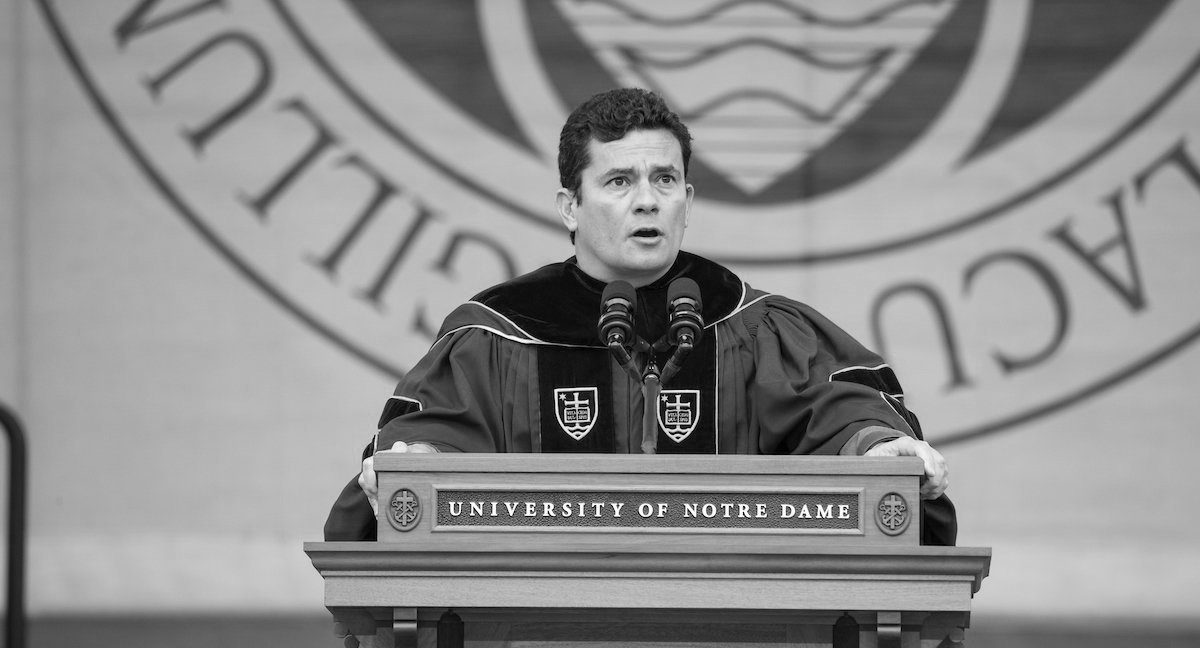Update 23/6/21: Brazil’s Supreme Court has re-confirmed its March 2021 ruling that Sergio Moro acted with bias in his prosecution of Lula as part of the US-orchestrated Lava Jato investigation.
by Brian Mier
The Brazilian Supreme Court just released its March, 2021, 411 page ruling that reverses all Lava Jato related convictions against former President Luiz Inacio Lula da Silva and initiates an investigation of 7 counts of felony judicial bias against disgraced former judge and Justice Minister Sergio Moro.
When the ruling was first announced, many journalists were quick to credit the Intercept, for it’s slow-motion leaking of a small portion of the Telegram conversations between prosecutors revealed by hacker Wagner Delgatti in what is now called Operation Spoofing. Delgatti himself is now facing a 300 year prison sentence for his voluntary service to the Brazilian rule of law. To be fair to the journalists, Supreme Court Justice Gilmar Mendes did mention the Telegram leaks during his justification for voting in favor of the ruling. However, as the Brazilian Workers Party was quick to point out on the day the ruling was finally published, there is no mention whatsoever of the leaks in the Court decision. The ruling itself is on a habeas corpus that cites 7 acts of alleged felony judicial bias perpetrated by Judge Moro between 2016 and 2018, which was filed by Lula’s defense team in late 2018 – months before the first Telegram leaks were published.
The following is a description of the 7 counts of judicial bias for which Moro is now under investigation. They were all public knowledge, written about in the Brazilian legal blogs and Brazilian media at the time. It is important to note that most of these episodes were either ignored or downplayed in the Anglo media, including the progressive media.
1) On March 4, 2016 Judge Moro created a media spectacle by ordering an armed Federal Police escort to bring Lula in for questioning and inviting TV stations to film it, without formally summoning the former President in advance as required by article 260 of the Brazilian Criminal Code. This act violated a Constitutional right of the defendant against self-incrimination. The Supreme Court ruling says that Moro’s order caused illegal exposure and damage to the dignity and presumption of innocence of the defendant. The fact that Moro broke the law and violated the Constitutional right of presumption of innocence was not mentioned in international media outlets like the BBC, and their coverage of this incident contributed to damaging his image;
2) Moro ordered wide scale, illegal wire tapping of conversations between Lula, President Dilma Rousseff and Lula’s family members, along with a 30 day wire tap of Lula’s entire defense team in 2016, with the goal of monitoring and anticipating the defense strategy;
3) Moro then leaked fragments of these wire tapped telephone conversations to the Brazilian media that had been edited to incriminate the former President as much as possible, on March 13, 2016, a few days before the impeachment proceedings against President Dilma Rousseff;
4) Moro ordered Curitiba federal police to disobey a habeas corpus issued by 4th Regional Court Judge Rogerio Favreto demanding Lula’s immediate release from prison during the lead up to the 2018 presidential elections. According to the Supreme Court ruling, Moro acted intensely to block Lula’s release, including calling the national federal police chief, even though the order came from a higher court than the Curitiba district court where he was employed at the time;
5) During the trial over the now-discredited Guaruja triplex apartment case, Judge Moro made repeated, public, unsubstantiated claims of abusive behavior by Lula’s defense team;
6.) 3 days before the first round presidential elections in 2018, Moro illegally leaked parts of sealed plea bargain testimony to the media made by former Minister of the Economy Antonio Palocci, after it had already been dismissed by by a São Paulo court that Moro had no jurisdiction over, with the deliberate intent of damaging Workers Party presidential candidate Fernando Haddad; and
7.) Sergio Moro accepted the position of Justice Minister in the government of Jair Bolsonaro, who was the primary electoral adversary of the Workers Party. The Supreme Court views this as evidence that he benefited personally by Lula’s imprisonment. In the words of the Supreme Court, “the extremely perplexing acceptance of political office in the government that the judge helped elect did not go by unnoticed by the national and international academic community.”
The decision, downplayed as a “technicality” by many in the international media, declares null and void all rulings by Sergio Moro in the ambit of Lava Jato and recognizes his actions supporting the 2016 impeachment of Dilma Rousseff and the election of Jair Bolsonaro. Time Magazine’s 2016 personality of the year is now the suspect in 7 felony cases of judicial bias. Here is hoping that the fact that the United States Government was an active partner in the Lava Jato investigation also does not go by unnoticed by the international media and academic community.
[qpp]

